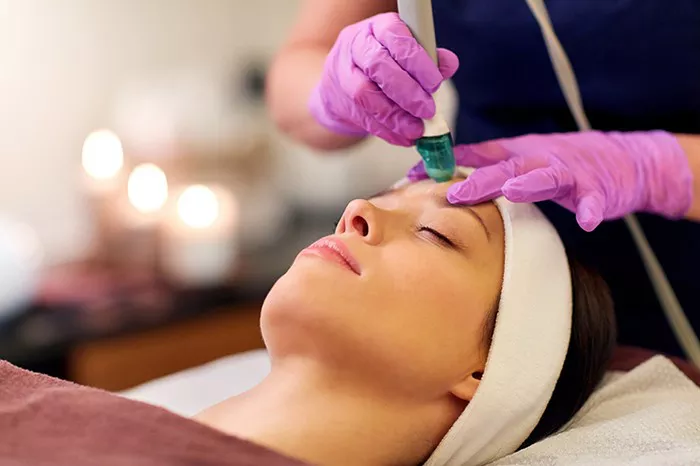Microdermabrasion is a popular non-invasive cosmetic procedure that uses a diamond-tipped wand or crystals to exfoliate the skin’s surface. The treatment removes the outermost layer of dead skin cells, revealing smoother, brighter, and more youthful-looking skin. While microdermabrasion is generally considered safe and effective, many people wonder if their face will peel after the treatment. In this article, we will explore the answer to this question and provide some tips for taking care of your skin after microdermabrasion.
What Happens During Microdermabrasion?
Microdermabrasion is a minimally invasive procedure that is performed in a dermatologist’s office or a medical spa. During the treatment, a handheld device is used to spray tiny crystals or a diamond-tipped wand over the skin’s surface. The device then vacuums up the dead skin cells and crystals, revealing smoother, brighter, and more youthful-looking skin. The procedure usually takes between 30 and 60 minutes, depending on the size of the treatment area.
Will Your Face Peel After Microdermabrasion?
One of the most common questions people have about microdermabrasion is whether their face will peel after the treatment. The answer is that it depends on the individual and the type of microdermabrasion they receive. Some people may experience mild peeling or flaking after the treatment, while others may not experience any peeling at all.According to a study published in the Journal of Cosmetic Dermatology, microdermabrasion can cause variations in the morphological changes between the control and the treated groups. The study found that microdermabrasion removes the superficial epidermal layer, which has an impact on the hydrolipid skin coat. This means that the skin may be more prone to dryness and flakiness after the treatment.Another study published in the Journal of the European Academy of Dermatology and Venereology found that microdermabrasion can have an early effect on hydration and sebum levels. The study found that the treatment can cause a decrease in hydration levels and an increase in sebum levels, which can contribute to dryness and flakiness.
How to Care for Your Skin After Microdermabrasion
If you do experience peeling or flaking after microdermabrasion, it’s important to take care of your skin properly to avoid further irritation or damage. Here are some tips for caring for your skin after microdermabrasion:
1. Moisturize
Moisturizing is essential after microdermabrasion to help soothe and hydrate the skin. Use a gentle, fragrance-free moisturizer to avoid further irritation. Apply the moisturizer several times a day, especially after washing your face or taking a shower.
2. Avoid Exfoliating
Because microdermabrasion removes the topmost layer of the skin, exfoliating will irritate the fresh, new skin that is revealed after treatment. Do not use any retinols, microbeads, or enzymes, as these can all irritate the skin.
3. Do Not Pick Your Skin
Some areas of dry skin may appear after microdermabrasion, but do not pick, scratch, or scrub the dead skin away. This can irritate the skin and pulling off dead skin can even lead to infection. Peeling any dry skin can also cause hyperpigmentation and redness.
4. Protect Your Skin from the Sun
After microdermabrasion, your skin may be more sensitive to the sun’s harmful rays. It’s important to protect your skin by wearing a broad-spectrum sunscreen with an SPF of 30 or higher. Avoid direct sunlight and wear a hat or other protective clothing when you’re outside.
Conclusion
In conclusion, microdermabrasion is a safe and effective procedure that can help improve the appearance of your skin. While some people may experience mild peeling or flaking after the treatment, others may not experience any peeling at all. If you do experience peeling or flaking, it’s important to take care of your skin properly by moisturizing, avoiding exfoliating, not picking your skin, and protecting your skin from the sun. By following these tips, you can help ensure that your skin looks and feels its best after microdermabrasion.

